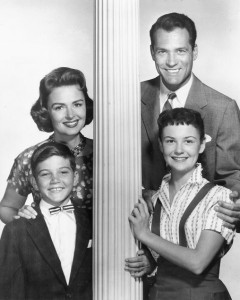It was one of those happy misunderstandings I come by whenever I have to speed-read something. Yesterday, in his long and candid interview with America Magazine’s Fr. Antonio Spadaro, Pope Francis turns his critical eye on the leadership style he adopted during his first years as Jesuit provincial in Argentina:
To be sure, I have never been like Blessed Imelda [a goody-goody], but I have never been a right-winger. It was my authoritarian way of making decisions that created problems.
At first I misread the pope to mean he’d never been a Blessed Imelda, as though the name were typical, like Cassandra’s or Uncle Tom’s. But I couldn’t make out his attitude toward her. In the papal view, was being a Blessed Imelda a plus or a minus? America’s editorial staff had chosen the words “goody-goody” to describe her, which suggested she was known, to those who knew her, as a scrupulous pain in the ass. But Pope Francis seemed to like Blessed Imelda enough to draw a contrast between being like her and being a right-winger. That really threw me, since I’d gotten into the habit of thinking of right-wingers as goody-goodies. (To any fun, debauched libertarians who might be reading this, hey, I’m sorry. Thanks for your patronage, and don’t forget to tip your blogger.)
Well, some on-the-spot research undertaken by a couple of Facebook friends — one of them having a close family connection to a member of America’s editorial staff — solved part of the mystery. The Blessed Imelda Pope Francis had in mind was the Blessed Imelda Lambertini, a 14th-century Bolognese aristocrat who entered a Dominican convent at the age of nine and champed at the bit for the Blessed Sacrament until:
When she was eleven years old she was present with the rest of the community at the Ascension Day Mass. All the others had received their communion: only Imelda was left unsatisfied. The nuns were preparing to leave the church when some of them were startled to see what appeared to be a Sacred Host hovering in the air above Imelda, as she knelt before the closed tabernacle absorbed in prayer. Quickly they attracted the attention of the priest who hurried forward with a paten on which to receive It. In the face of such a miracle he could not do otherwise than give to Imelda her first communion, which was also her last. For the rapture with which she received her Lord was so great that it broke her heart: she sank unconscious to the ground, and when loving hands upraised her, it was found that she was dead.
Dawn Eden has been struggling valiantly to rescue child saints from their own press corps, but she’s got her work cut out for her. Thanks to syrupy hackiographies, they tend to come across as so many Tiny Tims and Little Nells — reading about whose death without laughing, Wilde famously said, requires a heart of stone. And these are the ones lucky enough not to have figured as the victims in penny-dreadful stories later determined to have been blood libels against the Jews.
It brought everything, finally, into focus. America wasn’t using “goody-goody” in the sense of “persnickety,” and Pope Francis wasn’t using “right-winger” in the sense of “Ken Cuccinelli.” What the pope meant was: “Back when I was Jesuit provincial during the Dirty War, I may not have been filled to the brim with sweetness and light, but I am not a control freak. And I do not support national reorganization processes that involve throwing political dissidents into the Rio Plata from low-flying aircraft, nosirreebob.”
Point readily — and happily — taken. Still, I like the idea of using Blessed Imelda’s name as a shorthand for improbable, or implausible, sanctity. Here in the Mountain Standard Time Zone, folks speak of Molly Mormon. Unlike Imelda Lambertini, she’s not an actual person, but a Wilma o’ the wisp who, according to Wiki, “embodies the cheery, chipper and domesticated female of Latter-Day Saint culture.” When Mormons bestow the title, they don’t always mean it as a compliment — it can connote try-hard inauthenticity. But many Mormon women do embrace it, perhaps a little defiantly, or even ironically. “Modern Molly Mormon” is the title of a serious blog on LDS women’s issues. Mormon cinema goes by the name “Mollywood.”
To help us celebrate our own ideals of holiness even as we subject them to critical scrutiny, we Catholics need an equivalent term. Once in my old parish chapel, which had hardwood floors and no kneelers, I saw another recent convert remain motionless on bare knees through an extra-long Eucharistic prayer. “Oh, quit showing off, Mortifying Mary,” I thought as I slumped back onto the pew. “Blessed Imelda” would have worked even better.
If, somehow, this usage fails to do the historical Imelda complete justice, she’ll be vice-president of a lively club. William Bligh, who flogged only one man on Bounty’s outward voyage, was far more humane a commander than many of his peers (though he was cursed with an abrasive personality). At a remove of more than 200 years, it doesn’t seem so awful that his name, not that of the cat-happy Duke of Clarence, has come to represent micromanaging for the ages.
Besides, Imelda’s a saint. She won’t mind.
At least while Pope Francis works on his theology of women, the term can be unisex. A couple of years ago, as I’ve written, I gave a pricey woolen coat to a beggar partly in a spirit of charity, but also to show up a priest whose pompous demeanor had gotten on my nerves. I count that as one of my Blessed Imelda moments.











